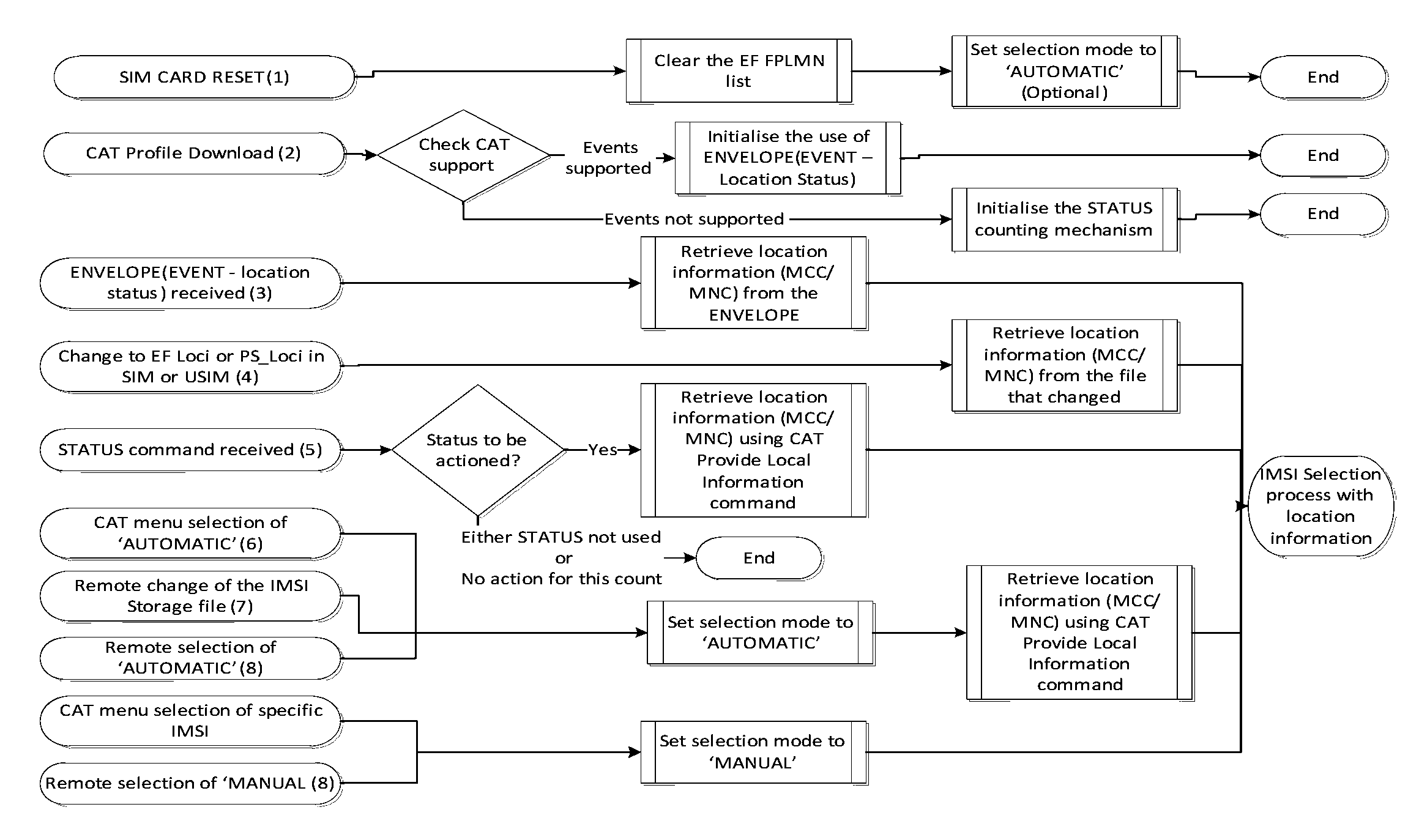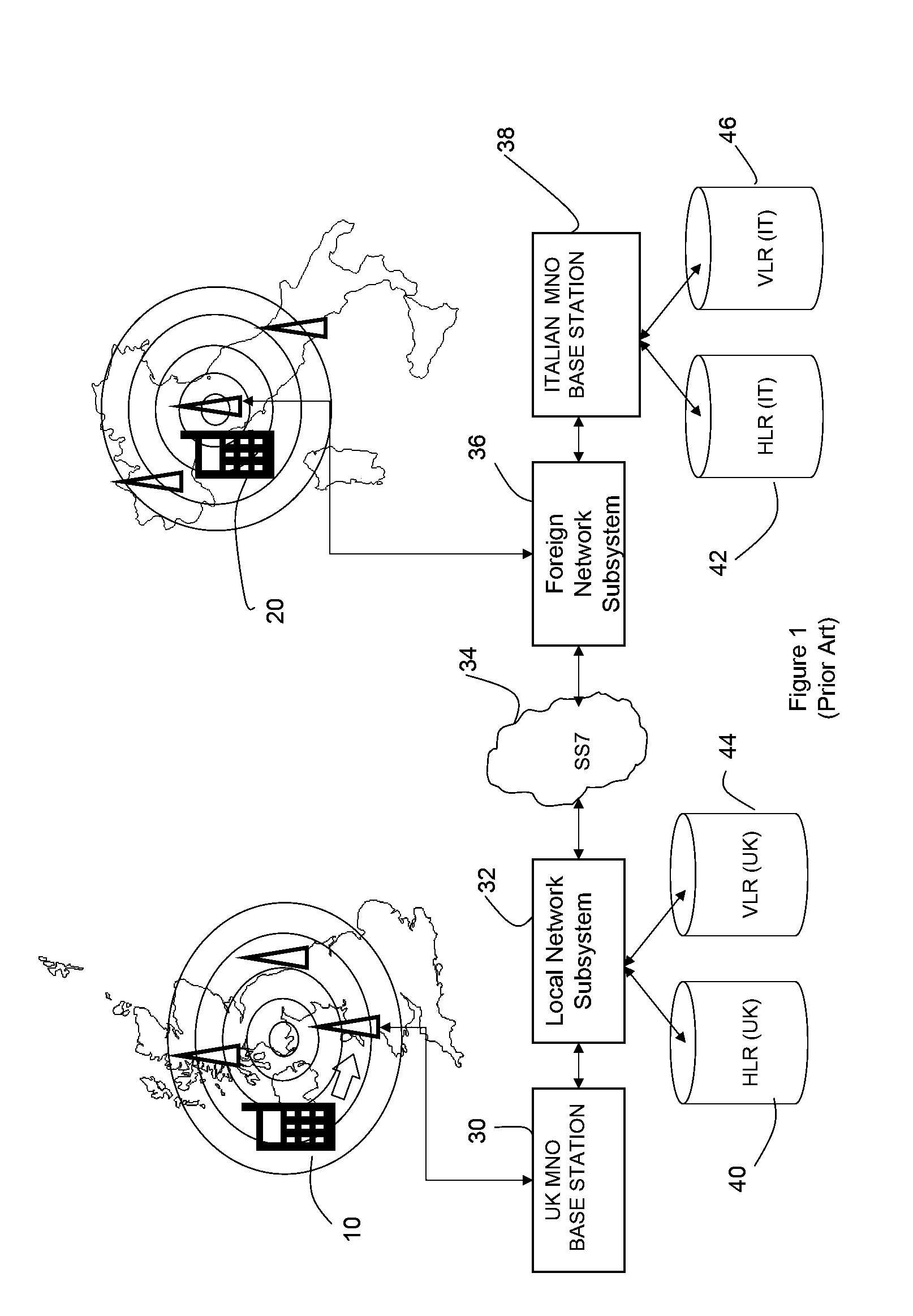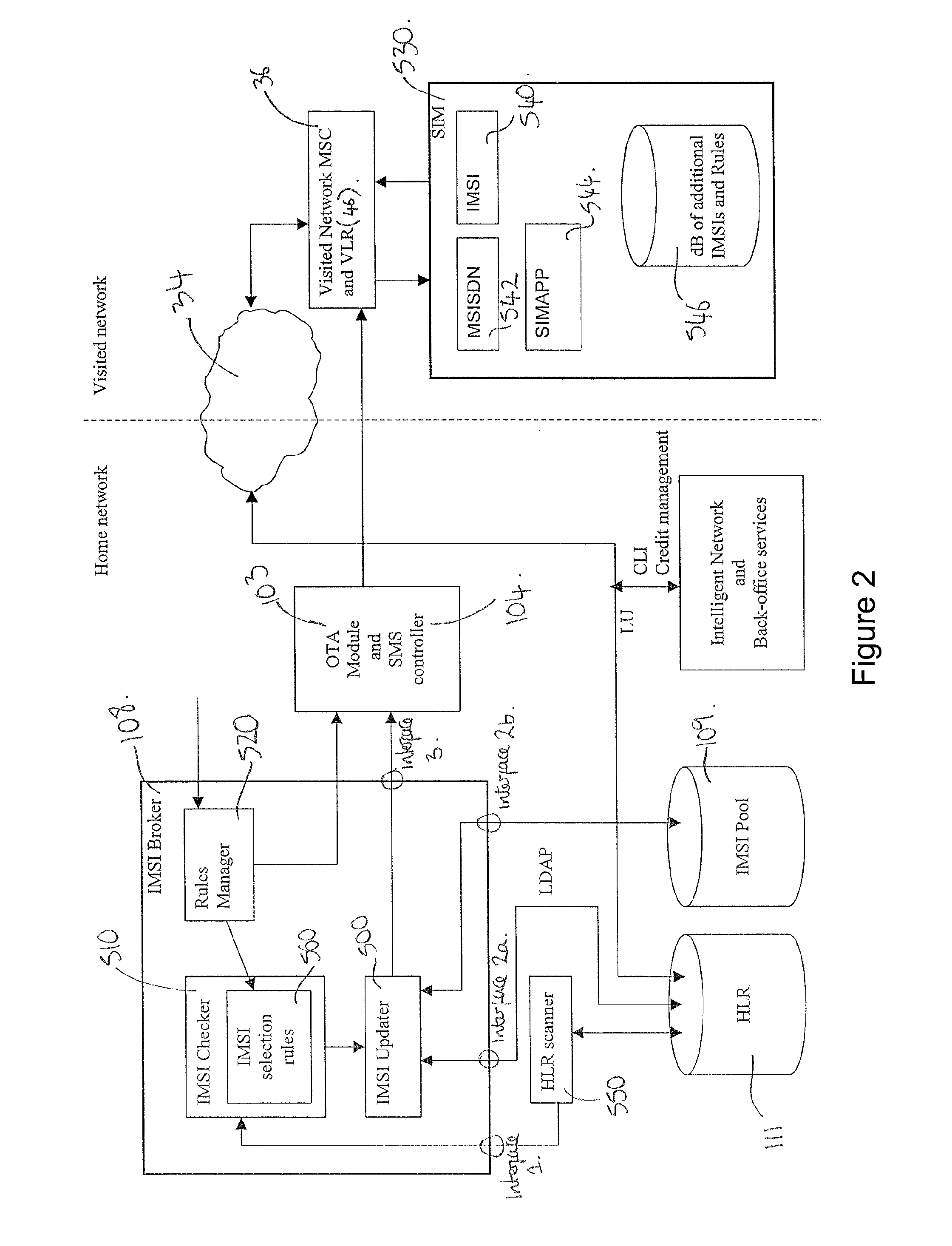Managing Mobile Device Identities
a mobile device and identity technology, applied in the field of identity management, can solve the problems of mobile phones being inadvertently attached to foreign networks, airplanes and cars do not have a ‘home, and users are poorly served by current systems
- Summary
- Abstract
- Description
- Claims
- Application Information
AI Technical Summary
Benefits of technology
Problems solved by technology
Method used
Image
Examples
Embodiment Construction
[0037]FIG. 1 provides a schematic representation of two cellular telecommunications networks, one in the UK and one in Italy, to indicate the general roaming problem addressed by embodiments of the invention. In reality there are many more Mobile Network Operators (MNO), Mobile Virtual Network Operators (MVNO) or Mobile Virtual Network Enablers (MVNE), and as such many more cellular telecommunications networks. However, FIG. 1 represents only two networks for simplicity.
[0038]When a first user makes a call from a first mobile phone 10 in the first user's local network, for example, in the UK, to a second user 20 in a foreign network (i.e. Italy), the call is routed through the local network's base station subsystem (BSS) 30 to a local network switching subsystem (local-NSS) 32, the call is then routed through the Signaling System Number 7 (SS7) 34 network to the foreign network, and through a foreign network switching subsystem (foreign-NSS) 36 to the foreign network's base station ...
PUM
 Login to View More
Login to View More Abstract
Description
Claims
Application Information
 Login to View More
Login to View More - R&D
- Intellectual Property
- Life Sciences
- Materials
- Tech Scout
- Unparalleled Data Quality
- Higher Quality Content
- 60% Fewer Hallucinations
Browse by: Latest US Patents, China's latest patents, Technical Efficacy Thesaurus, Application Domain, Technology Topic, Popular Technical Reports.
© 2025 PatSnap. All rights reserved.Legal|Privacy policy|Modern Slavery Act Transparency Statement|Sitemap|About US| Contact US: help@patsnap.com



